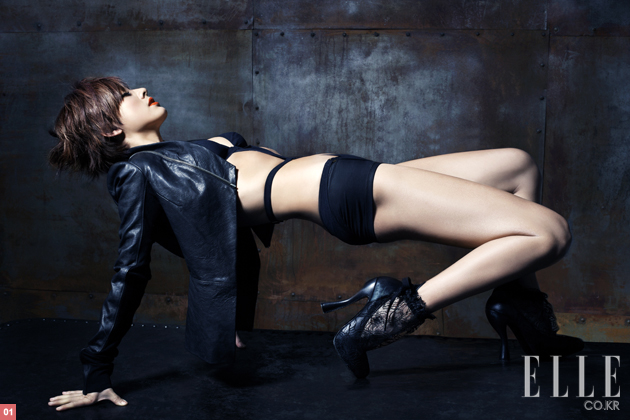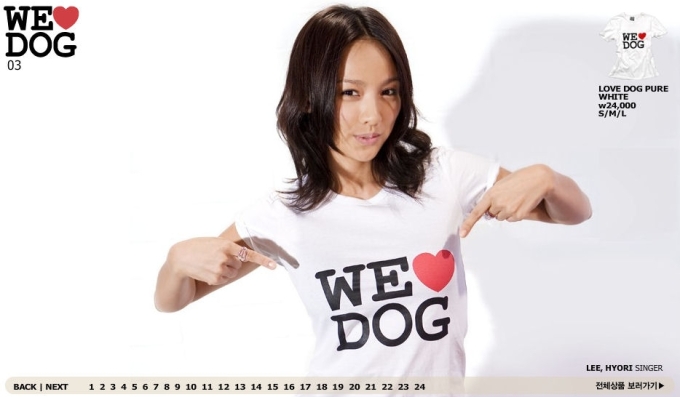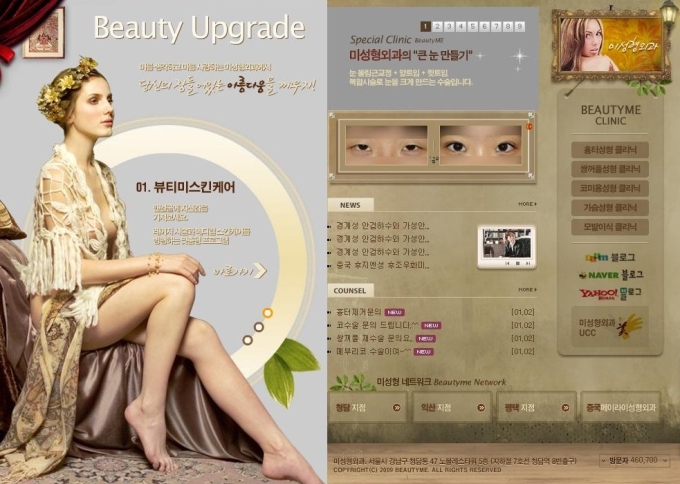Watching one of Lotte’s commercials for its new Cheoum Cheoreom Cool (처음처럼 쿨) soju dozens of times…as one does…then many thoughts come to mind, but that it is being effectively marketed towards women isn’t one of them. Yet weren’t they the main reason low-alcohol soju brands were launched in the first place?
As those objectified breasts and buttocks helpfully remind us, Cheoum Cheoreom Cool’s alcohol content is 16.8%, so take the examples of the two closest brands in terms of alcohol content for instance: Daesun’s Bom Bom (봄봄, 16.7%) launched in April, and Muhak’s Joeunday (좋은데이, 16.9%) launched in November 2006 (see here for a helpful graphic comparing all three), and both of those were indeed aimed towards women.
Of the two, Bom Bom’s marketing is the most of interest because Daesun took the very rare step of using a young, photogenic male in its advertisements. But while Muhak’s own campaign was ultimately unsuccessful (commercials released after early-2007 are difficult to find, and Joeunday’s website is no longer available, although the drink is still being produced), its use of then 28 and 36 year-old female and male entertainers Chae Yeon (채연) and Jung Jun-ho (정준호) respectively was also significant as a partial, albeit somewhat ambiguous attempt to appeal to a much older female demographic than all the other campaigns considered here.
![Joeunday Soju Chae Yeon Jung Jun-ho Joeunday Soju Chae Yeon Jung Jun-ho]() ( Source: Muhak )
( Source: Muhak )
Combined with the knowledge that only 30% of soju drinkers are women then, it would be very tempting to interpret the introduction of increasingly weaker soju drinks over the last decade in terms of a women-centered advertising narrative, with all the changes to Korean drinking culture, gender relations, and Korean women’s body-images that that would imply. But that would be quite mistaken however, as simply saving on costly alcohol is just as powerful a motivator for soju companies, and actually the vast majority of new brands are still exclusively targeted towards men (take Bohae’s Ipseju (잎새주; 19.5%), which I wrote about in April). In particular though, there is the fact that Lotte and Jinro take up 12.6% and 78% of the country’s soju market respectively, and so regardless of the innovations of other companies, it is the logic behind the marketing campaigns of these companies that is the most important.
In that vein, the case of Jinro’s J (제이, 18.5%) is very interesting: launched in October last year, I praised it for its original marketing, but it was still definitely aimed at 20-somethings of both sexes. In June this year though, a new marketing campaign specifically aimed towards getting women to associate the brand with staying slim was launched. In addition, when Lotte bought Doosan’s liquor arm in January this year (after an unsuccessful attempt to buy Jinro in 2005), it inherited a contract with Lee Hyori (이효리) from November 2007, and the logic to her commercials for Cheoum Cheoreom (처음처럼) was similarly getting (female) consumers to associate the brand with her slim body.
Which is what made this latest effort from Lotte so confusing:
In hindsight, it’s actually a little derivative of Jinro’s original effort, in which “1032″ refers to the depth from which the water used to prepare the drink is taken from the sea:
Granted, Lotte’s video briefly objectifies men too. Not that that somehow justifies the objectification of women in it of course…or that I’ll feign offense at either. Rather, it aroused me my interest because it reminded me of this:
…some advertisers, aware of the objections of the feminist movement to traditional images of women in ads, have incorporated the criticism into their ads, many of which now present an alternative stereotype of the cool, professional, liberated women…Some agencies trying to accommodate new attitudes in their campaigns, often miss the point and equate ‘liberation’ with a type of aggressive sexuality and very unliberated coy sexiness.
Dyer, G. (1982) Advertising as Communication, pp. 185-186, quoted in Strinati, D. (1995) An Introduction to Theories of Popular Culture, pp. 187-188)
Is that what is occurring here? Deciding to investigate then, I was stuck by the Korean media’s interest in the marketing campaign also, albeit for two entirely different reasons.
First, having an alcohol content under 17% means that commercials can be screened on television after 10pm, and hence that the alcohol content of soju drinks would eventually reach that level has long been predicted by industry analysts. Even more presciently though, back in March one said:
…if you go under 17% you blur the boundary with low-alcohol drinks. Because you gain the ability to have TV ads at less than 17%, you could be promoting drinking cultures and exposing teenagers to it, so the authorities may stop you.”
And as this Korean source reveals, last week the rules were indeed changed. But Joeunday’s commercials wouldn’t have been particularly corrupting of Korean youth, nor Daesun’s commercial below with Kang Dong-won (강원도), on Korean screens since August 1, so this was probably a direct reaction to the launch of Cheoum Cheoreom Cool in late August.
Only Daeson suffered though, as in anticipation of the negative publicity and the government’s intentions, spokespeople for Lotte said that they never decided not to make television commercials (see here and here). Which brings me to the second reason for the intense media interest in it: Lotte deciding not to use Lee Hyori to endorse the drink, despite her still easily being Korea’s biggest sex-symbol, and notorious for always sexing-up advertisements and pushing the limits of Koreans’ supposed Confucian reserve (see here and here). Apparently, in nearly 2 years promoting Cheoum Cheoreom, she hadn’t brought around the turnaround in fortunes expected (update: these statistics dispute that).
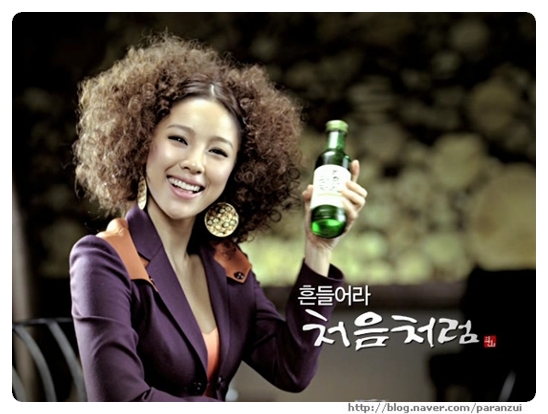 But in fairness to Lee Hyori, Doosan was in the midst of reorganizing itself into a holding company centered around heavy industries when it hired her, and in hindsight the same company that had just bought the world’s biggest maker of construction equipment earlier that year was not necessarily the best one to transform the image of the drinks in the eyes of 20-somethings: see here and here for the ensuing advertising disasters. Hence the consternation caused earlier this week when it was revealed that while she would continue to promote Cheoum Cheoreom, relatively unknown UEE (유이) would be used for Cheoum Cheoreom Cool instead (but not replacing Lee Hyori, as this blog naturally but mistakenly stated), and with the combination of the two Lotte hopes to bring their market share up to 15%.
But in fairness to Lee Hyori, Doosan was in the midst of reorganizing itself into a holding company centered around heavy industries when it hired her, and in hindsight the same company that had just bought the world’s biggest maker of construction equipment earlier that year was not necessarily the best one to transform the image of the drinks in the eyes of 20-somethings: see here and here for the ensuing advertising disasters. Hence the consternation caused earlier this week when it was revealed that while she would continue to promote Cheoum Cheoreom, relatively unknown UEE (유이) would be used for Cheoum Cheoreom Cool instead (but not replacing Lee Hyori, as this blog naturally but mistakenly stated), and with the combination of the two Lotte hopes to bring their market share up to 15%.
Which is why it is UEE that graces the front page of all Korean portal sites as I type this, and as it turns out, what I’d seen was merely one of many pre-launch commercials and advertisements based on the theme of “168 ,” most of which were rather inane. Here then, is the commercial Lotte really wants you to remember:
In it, UEE begins with “오빠 나 쿨해, 내가 진짜 처음이야?”, which roughly translates as (to the guys she’s dating) “I’m cool…am I really your first?”. After that, the first guy just mutters nonsense, and later she says “쿨하게 생각해!” or…er…”Think Cooly,” and she finishes with “원샷. 어! 상쾌해!”, or “One shot! Oh! It’s sweet!”.
Consider these accompanying advertisements also, released at the same time:
![UEE Soju Cool Honest UEE Soju Cool Honest]() ( Source: Naver )
( Source: Naver )
![UEE Soju Cool Love UEE Soju Cool Love]() (Source: Naver)
(Source: Naver)
The text in the first reads: “Q: Honest. 남친이랑 여행할땐, 솔직히 말하는게 Cool 할걸까? MT 간다고 뻥치는게 Cool 할건까? A: Think Casual”, or “When you travel with your boyfriend, which is cooler: admitting it to your parents, or lying and saying you’re going on a trip with your university friends?”. And in the second: “Q : Love 키스할때 눈을 감고 하는게 Cool 하니? 쳐다 보면서 하는게 Cool 하니? A : Think Casual”, or “When you kiss, which is cooler? With your eyes closed or staring at your partner?”. In addition, many bottles of the drink will be sold with blue or pink bottletops, with the above messages or similar ones printed on the labels (see the video here at 0:31 to see those). And despite the former ostensibly being directed towards women, one might speculate that the message with the blue text might actually appeal more to men, and only with the pink or red more to women.
And so considering: the bicep in the prelaunch advertisements and commercials; their kissing scenes (albeit no longer remarkable in Korean advertising); and now these, with the intention of showing “how cool women behave,” then of course the marketing campaign is also aimed towards them. Even possibly the de rigueur “sexy dance” below too, as even though UEE was chosen because of her popularity among 20-something men, such dances are often used to advertise products to women also:
As an aside, several sources describe the dance as simultaneously sexy and pure and innocent, but without any apparent trace of irony: something that won’t surprise Brian in Jeollanam-do, who has often criticized the bastardization of the word in the Korean language. I wonder though, if that adds to the argument that it is intended for both female and male consumption? Regardless, here’s a video of the making of it also, and although I find personally find that they ruin the fantasy element to commercials myself, they are also important elements to marketing campaigns these days (and I speculate more popular among women than men):
By this stage then, you will probably not be surprised to find that most of the Korean sources I’ve linked to do in fact mention that the drink was aimed at both sexes (although one adds that it would have been more logical to exclusively aim it towards women). But rather than simply provide that information at the beginning, I decided to roughly replicate the process by which I came to find that information for myself, hopefully providing a good overview of the current state of soju advertising in the process (but which should definitely be read in conjunction with this one from June).
And also to resist my temptation to merely assume that the marketing campaign with UEE both reflects and/or is the harbinger of more sexually assertive images of women in Korean advertising. After all, considering that: the recession has already forced advertisers of all stripes to rely on consumers’ basic instincts; soju companies have nothing but the profit incentive in mind; and if they don’t see (hyper)objectification of women for a male gaze as incompatible with the commensurate goal of selling soju to women, confirming the suspicions that first came to mind as discussed, then that doesn’t bode well for reducing Korean women’s excessive worries about their appearances.
And yet regardless of the motivations behind them, one still can’t help but reflect on all the changes to women’s images in soju advertising in recent years, not all of which have been negative. Granted, I have often exaggerated the depth and positive impact of those changes in the past. But let me leave you with the fact that this alternate image of women was the norm less than two years ago:
At the very least then, we can all agree on the pace of change…just one reason why Korean sociology is so interesting!
Posted in Body Image, Korean Advertisements, Korean Sexuality Tagged: 소주, 유이, 이효리, Lee Hyori, Soju, UEE

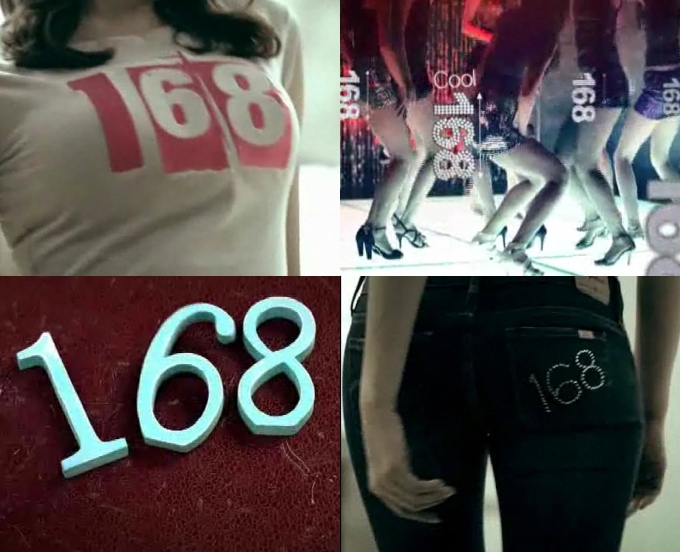
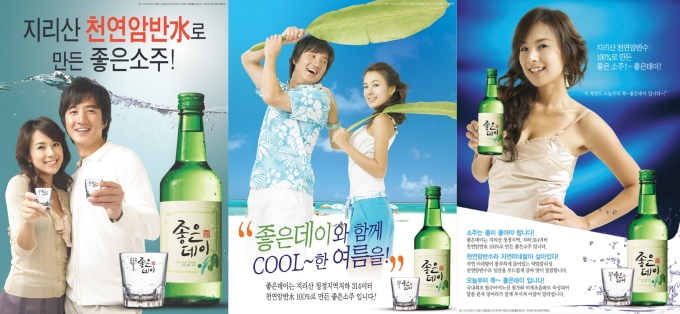
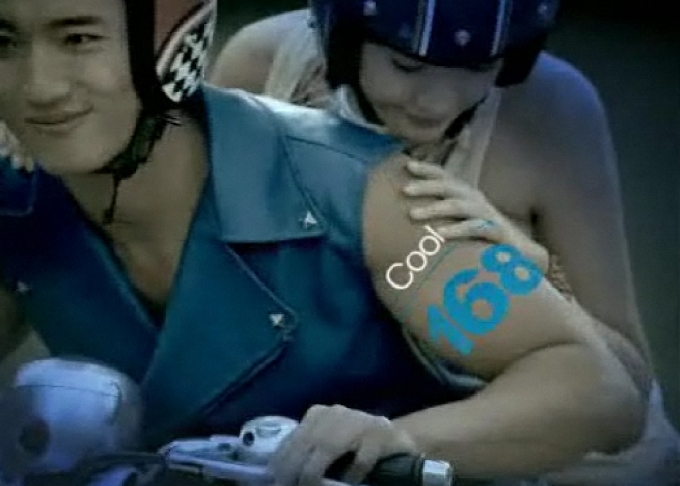
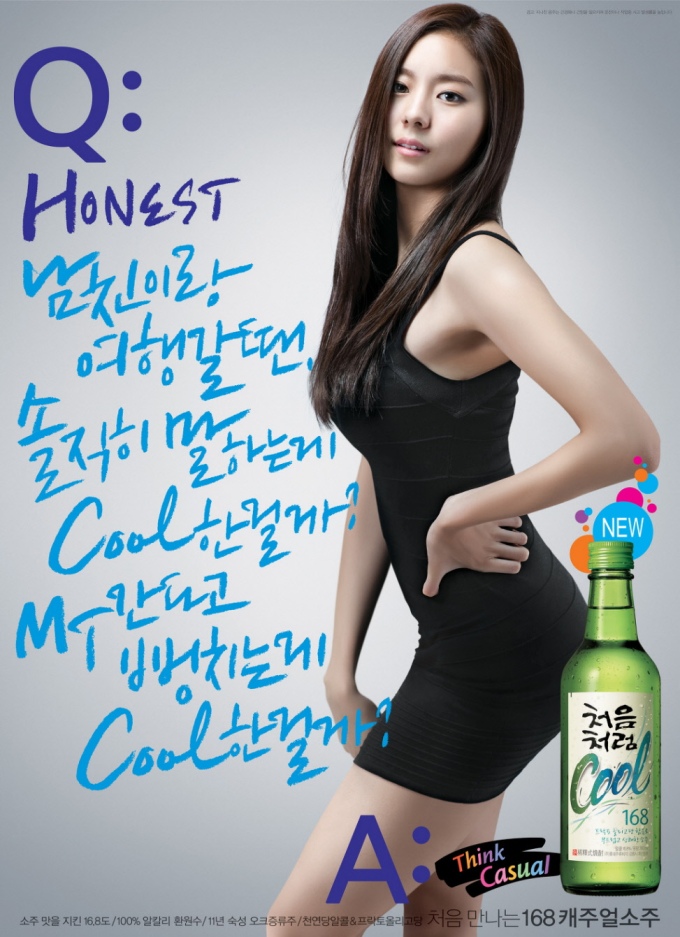
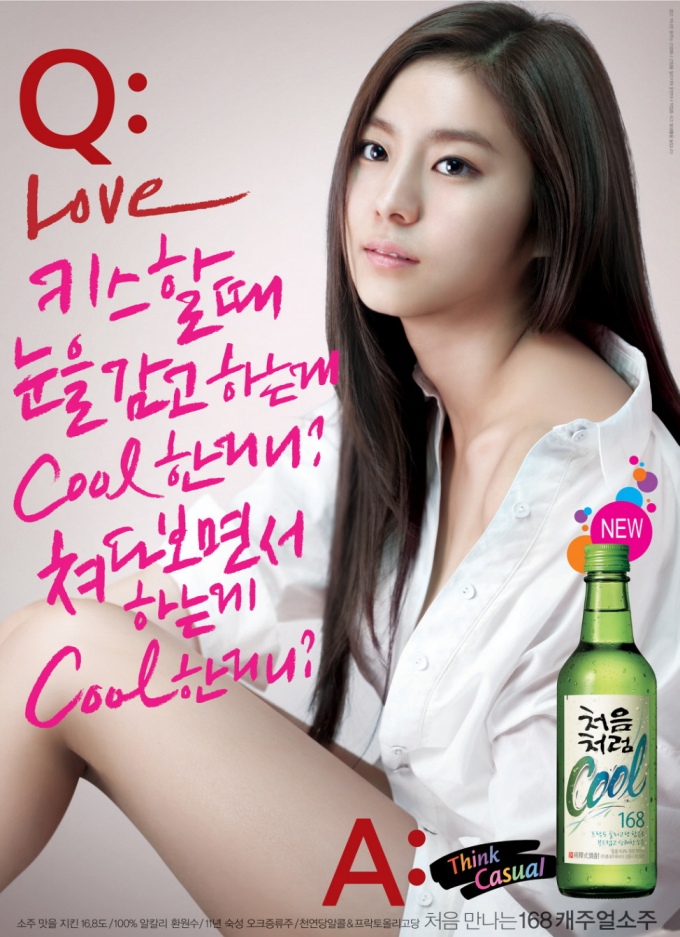 (Source:
(Source: 
